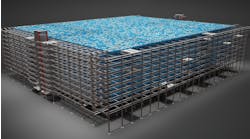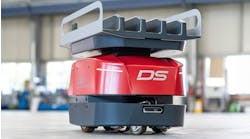U.S. manufacturers have been feeling good about the outlook for the domestic economy. A new survey indicates that they're gradually feeling better about the outlook for the global economy as well.
Some 40 percent of the senior executives responding to PwC's third-quarter Manufacturing Barometer expressed optimism regarding the world economy for the next 12 months – up from 31 percent in the second quarter and 29 percent in third-quarter 2012.
Still, optimism regarding actual revenue contributions from international markets in the next 12 months remained low at 30 percent, down two points from the second quarter and off eight points from last year's third quarter.
Meanwhile, six out of 10 executives expressed optimism about the growth prospects for the U.S. economy. In addition, 78 percent believe the U.S. economy grew in the third quarter, up six points from the prior quarter and representing the highest level since 2006.
"Despite the uptick in global economic sentiment, the U.S. remains the growth driver in the industrial manufacturing sector, with continued signs of healthy demand, pricing strength, new product investment and hiring," said Bobby Bono, U.S. industrial manufacturing leader for PwC.
"Overall top-line growth expectations remain moderate and management teams are continuing to take a careful approach to capital allocation and cost management, while preserving liquidity."
Growth Ahead
Reflecting the healthy level of optimism pertaining to the domestic economy, 82 percent of U.S. manufacturers said they expect positive revenue growth for their own companies in the next 12 months, with only 2 percent forecasting negative growth.
The projected average revenue growth rate over the next 12 months remained moderate at 4.2 percent, down from 4.6 percent in the second quarter and last year's third quarter.
Only 7 percent of executives forecast double-digit growth, while 75 percent expect single-digit growth.
Nearly half of the executives said their firms are planning major new capital expenditures during the next 12 months, up eight points from the prior quarter's 40 percent, and on par with a year ago (49 percent).
Plans for operational spending also rose. Looking at the next 12 months, 78 percent of respondents said they plan to increase operational spending, up five points from the second quarter.
The top spending priority is the introduction of new products or services (55 percent), which reached its highest level in the past seven quarters of the survey.
Another 38 percent of executives said their top spending priority is R&D, and 35 percent pointed to information technology.
Plans for new joint ventures and strategic alliances also rose, while spending forecasts for M&A and overseas expansion remained low.
"In an uncertain environment, industrial manufacturers are managing risk and concentrating on strengthening their products and services," Bono explained. "They are doubling down on what they do best in a quest to expand market share."
Hiring Plans on the Rise
The latest PwC barometer showed that hiring plans are on the rise, with expectations reaching the highest level in five years and the second-highest quarterly percentage in the past 10 years.
Some 58 percent of U.S. manufacturers said they plan to add employees to their workforce over the next 12 months, up 16 points from second-quarter estimates.
Only 3 percent plan to reduce the number of full-time equivalent employees, and 39 percent will stay about the same.
The most sought-after employees will be skilled labor (35 percent), professionals/technicians (35 percent) and production workers (30 percent).
Despite healthy hiring expectations, the survey identified headwinds in securing qualified workers.
Three-fourths (77 percent) of respondents cited a need to fill certain skill gaps over the next 12 to 24 months, with only 23 percent claiming to have all the right skills needed at present.
The biggest skill gaps were in middle management (70 percent) and skilled labor (67 percent).
At the same time, half of the U.S. firms admitted to having open positions that they were unable to fill with skilled employees.










